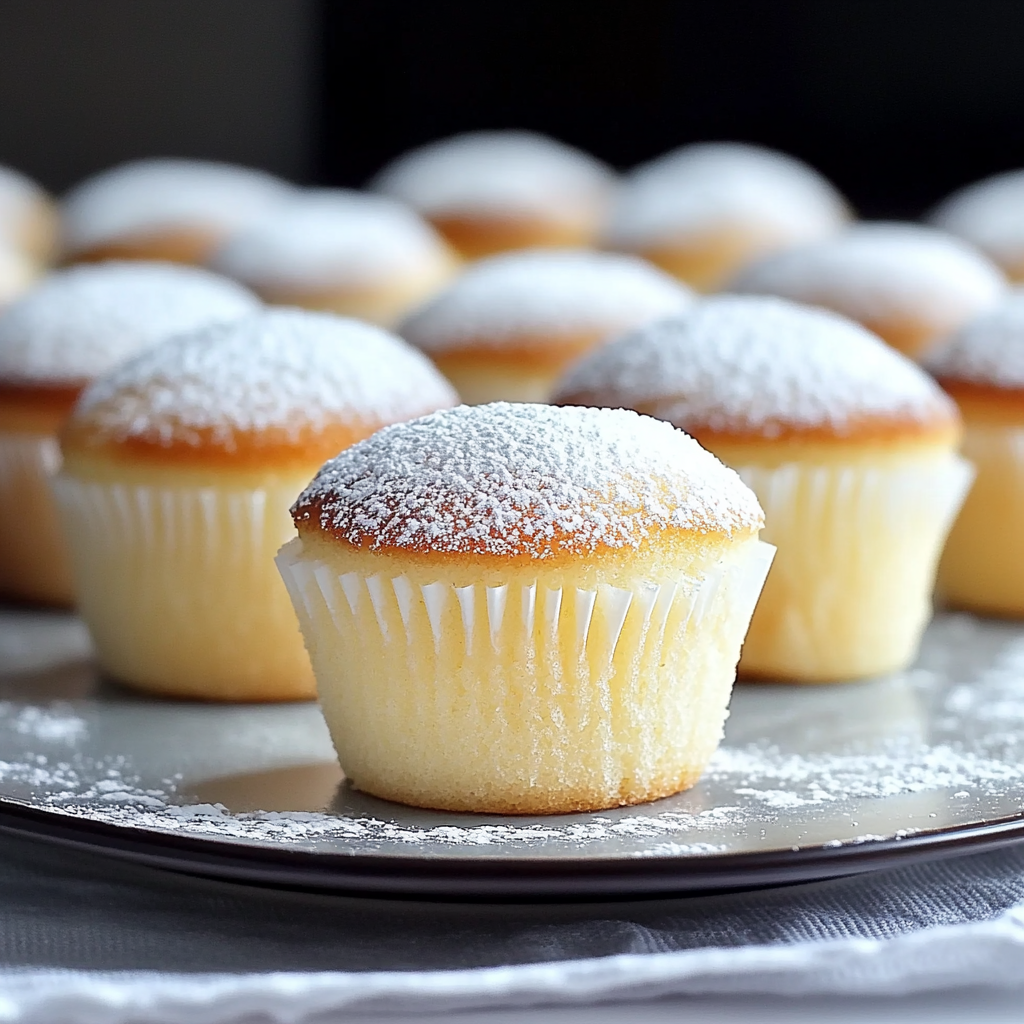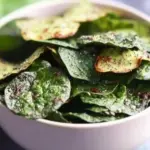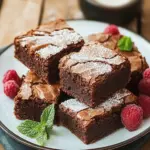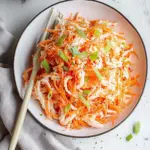These Fluffy Japanese Cotton Cheesecake Cupcakes bring a touch of elegance to any dessert table. Soft, airy, and subtly sweet, they’re a beautiful blend of cheesecake richness with the lightness of a soufflé.
Perfectly portioned and delicately golden on top, these cupcakes are ideal for afternoon tea, parties, or a simple after-dinner treat. Their texture is unmatched—like biting into a cloud that leaves a creamy finish on the tongue.
Full Recipe
Ingredients:
-
8 oz (225 g) cream cheese, softened
-
1/4 cup (60 g) unsalted butter, softened
-
1/2 cup (120 ml) whole milk
-
1/2 cup (100 g) granulated sugar
-
4 large eggs, separated
-
1 tablespoon lemon juice (optional)
-
1/2 cup (60 g) all-purpose flour
-
1/4 cup (30 g) cornstarch
-
1/4 teaspoon salt
-
1 teaspoon vanilla extract
-
Powdered sugar, for dusting (optional)
Directions:
-
Preheat your oven to 320°F (160°C). Line a 12-cup muffin tin with cupcake liners.
-
In a medium saucepan, combine cream cheese, butter, and milk. Heat on low, stirring until smooth. Remove from heat and cool to room temperature.
-
In a bowl, whisk flour, cornstarch, and salt.
-
In a large mixing bowl, whisk egg yolks, sugar, and lemon juice (if using) until pale. Add the cooled cheese mixture and combine.
-
Sift in dry ingredients and stir gently until smooth.
-
In a clean bowl, beat egg whites until soft peaks form. Gradually add 2 tablespoons of sugar and beat until stiff peaks form.
-
Fold a third of the egg whites into the batter to lighten it. Then gently fold in the rest until fully incorporated.
-
Pour batter into cupcake liners, filling 3/4 full. Tap pan to remove air bubbles.
-
Bake for 20–25 minutes or until golden brown and slightly puffed.
-
Cool in pan for 5 minutes, then transfer to a wire rack.
-
Dust with powdered sugar before serving, if desired.
Prep Time: 15 minutes
Cooking Time: 25 minutes
Total Time: 40 minutes
Kcal: Approximately 200 kcal per cupcake
Servings: 12 cupcakes
A Delicate Dessert Inspired by Japan’s Love for Lightness
The Fluffy Japanese Cotton Cheesecake Cupcakes are a testament to the meticulous beauty of Japanese baking—delicate in texture, balanced in flavor, and aesthetically delightful. Unlike dense Western-style cheesecakes, this version leans toward a feather-light soufflé, making it an irresistible treat even for those who typically shy away from rich desserts. This recipe has taken inspiration from the famous Japanese cotton cheesecake but reimagines it into individual portions, perfect for entertaining, gifting, or indulging in a personal treat without the guilt.
What Makes Japanese Cheesecake Unique
Japanese-style cheesecakes differ significantly from their American counterparts. The most defining feature is their texture. Achieved through a careful folding of whipped egg whites into the batter, the resulting structure is light, airy, and almost cloud-like. The cakes gently puff as they bake and deflate slightly as they cool, developing a characteristic wrinkled top that many consider a signature trait of a well-made Japanese cheesecake. When turned into cupcake form, they carry all the charm of the larger version in a more manageable and snackable size.
Another key feature is the flavor balance. Japanese cheesecakes use much less sugar than typical cheesecakes, leaning into subtle sweetness rather than heavy richness. The cream cheese provides a tangy base, while additions like lemon juice or vanilla extract lift the flavor. It’s an elegant and restrained dessert, making it incredibly versatile for different palates.
Why Bake Cheesecake Cupcakes Instead of a Whole Cake
The cupcake format adds practicality and creativity to this already beautiful dessert. Not only are they easier to portion and serve, but they also bake more evenly than a large cake, which can sometimes be prone to cracking or sinking in the center. For bakers who are intimidated by the water bath often required for the traditional large Japanese cheesecake, these cupcakes are a less finicky introduction into the world of soufflé-style baking.
Cupcakes also make for beautiful dessert tables, party favors, or café offerings. You can top them with a dusting of powdered sugar, a light citrus glaze, or a dollop of whipped cream to elevate their visual appeal. For food bloggers, stylists, and photographers, they’re an Instagram-ready subject that showcases delicate textures and soft, golden tops beautifully.
Cultural Influence and Japanese Aesthetics in Baking
Japanese cuisine often emphasizes the importance of balance, simplicity, and seasonality—values that are easily spotted in this recipe. The cotton cheesecake embodies the notion of “shun”, the idea of enjoying food at the peak of its season or perfection. While cream cheese isn’t seasonal per se, the lightness and flavor of this cake match perfectly with spring and early summer menus, where desserts often lean toward the fresh and floral.
Additionally, the Japanese focus on “omotenashi”—the spirit of thoughtful hospitality—is reflected in how these cupcakes are presented. Offering individual portions that are crafted with care speaks volumes about the cultural importance of serving others with intention and grace.
Perfecting the Technique: The Science of Texture
While the ingredients are simple, the technique is where the magic lies. Beating the egg whites to the perfect consistency—soft peaks that hold their shape but don’t dry out—is essential. Folding them gently into the base batter ensures that the structure remains intact, resulting in a cake that is both soft and stable. Over-mixing will deflate the batter, while under-mixing can leave streaks of egg white, affecting both the appearance and texture.
Oven temperature and timing also play crucial roles. The relatively low baking temperature allows the cakes to rise slowly and evenly, preventing cracks or domed tops. A quick tap of the baking tin before placing it in the oven helps release any large air bubbles that could disrupt the uniform texture. These small details are what elevate the outcome from good to excellent.
Flavor Pairings and Variations
While these cupcakes are divine on their own, they also lend themselves beautifully to customization. A light citrus glaze—lemon or yuzu—can enhance the tartness and bring brightness to the creamy texture. A swirl of fruit purée inside the batter, such as blueberry or raspberry, adds visual interest and a burst of flavor.
For a more decadent twist, chocolate or matcha powder can be incorporated into the batter for a dual-tone effect. Some bakers also choose to top them with a layer of jelly, cream, or fresh fruit after baking to create a dessert that’s both luxurious and visually stunning.
Beverage pairings also elevate the experience. A cup of delicate green tea or jasmine tea complements the subtle flavors without overpowering them. For coffee lovers, a lightly brewed latte or cappuccino enhances the creaminess of the dessert.
Storage, Shelf Life, and Serving Suggestions
These cupcakes are best enjoyed fresh, ideally the day they’re made, when their texture is at its peak. However, they can be stored in an airtight container in the refrigerator for up to three days. It’s recommended to allow them to come to room temperature before serving to ensure the soft, pillowy consistency returns.
They can also be frozen if properly wrapped, although there may be a slight change in texture. If freezing, do so before dusting with powdered sugar or adding toppings. Allow them to thaw overnight in the refrigerator, then warm gently before serving.
Serving them with a touch of garnish—powdered sugar, citrus zest, or a dollop of cream—not only enhances the presentation but can introduce an extra layer of flavor. For special occasions, consider using decorative cupcake liners or serving on tiered trays to create a high-tea aesthetic.
Baking Tips from Experienced Cooks
Patience and attention to detail are the true keys to mastering these cupcakes. Make sure all ingredients are at room temperature before mixing—this ensures smoother blending and better structural integrity. Avoid overbeating the egg whites, and always use clean, dry utensils to prevent deflation.
For those new to Japanese baking, it’s helpful to work with visual cues. Watch how the egg whites change consistency as you beat them, and notice how the batter lightens when folded properly. These tactile and visual lessons become second nature with practice and turn what may seem like a complicated recipe into a relaxing and rewarding baking ritual.
Nutritional Benefits and Considerations
While these cupcakes are certainly a dessert, they are a lighter alternative to traditional cheesecakes. The lower sugar content and use of whipped egg whites mean they’re less dense and contain fewer calories. Using a low-fat cream cheese can further reduce the richness without compromising the texture significantly.
Those watching their sugar intake or who follow a more balanced eating plan may find these cupcakes a satisfying compromise. However, for gluten-free diets, a direct substitute for the all-purpose flour is required—something like a 1:1 gluten-free flour mix with xanthan gum can often produce similar results.
Conclusion: A Dessert Worth Mastering
Fluffy Japanese Cotton Cheesecake Cupcakes offer a unique fusion of texture, flavor, and presentation that few other desserts can match. Their soft, melt-in-your-mouth consistency and mildly sweet flavor make them suitable for nearly any occasion—from elegant afternoon teas to casual family dinners. They are a celebration of balance: not too sweet, not too dense, but just right.
Beyond their delicate structure and delightful taste, these cupcakes represent a cross-cultural appreciation for the art of baking. They blend the richness of Western cheesecake with the lightness and finesse of Japanese culinary philosophy. Whether you’re a seasoned baker or just starting out, mastering this recipe is a gratifying journey into the world of refined, thoughtful dessert making.
These cupcakes aren’t just baked—they’re crafted, with care and precision, delivering not just flavor, but an experience. Add them to your baking repertoire, and you’ll always have a go-to recipe that impresses with elegance and simplicity.






